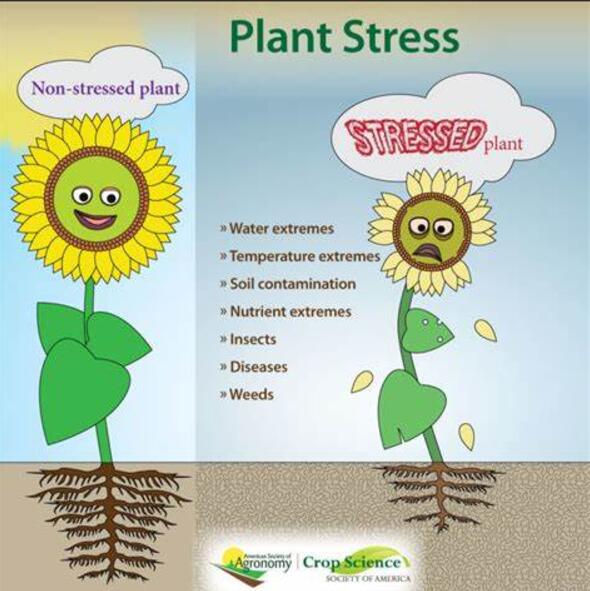Intercropping grapevine with rosemary: A promising alternative to conventional agriculture in the current frame of global change
IF 6.8
Q1 PLANT SCIENCES
引用次数: 0
Abstract
The Mediterranean region is well known for its long history of viticulture and the use of herbs and spices in its cuisine. Given the increasing focus on intercropping as a sustainable agricultural approach to maximize land use efficiency or improve soil fertility amid global change, we conducted a study to assess the feasibility of intercropping grapevine (Vitis vinifera L. cv. Merlot) with rosemary (Salvia rosmarinus Spenn.) in a Mediterranean vineyard. The trial was established in a 22-year-old vineyard, where rows of rosemary plants were cultivated between grapevine rows one year prior to the evaluation. To test intercropping feasibility and the abiotic stress effects on the harvest of rosemary, two sampling dates were set to monitor grape maturation (veraison and harvest) and rosemary quality in terms of antioxidant contents and composition, so that both crops were simultaneously analyzed under typical Mediterranean conditions, using both physiological and quality parameters. Results showed that intercropping with young rosemary plants did not affect grapevine physiology state, and observed differences in the two samplings were due to environmental stress only, indicating a positive coexistence between these crops in the context of global change. Regarding grape quality, variations in total soluble sugars, titratable acidity, and phenolic compounds were influenced by ripening during the summer, but not by intercropping, thus maintaining fruit quality. Rosemary contained high levels of antioxidants and exhibited strong antioxidant activity, particularly during mid-August (coinciding with vintage), indicating its potential as a valuable source of natural antioxidants for dietary intake, including phenolic diterpenes, vitamin C, and vitamin E. In conclusion, intercropping grapevines with rosemary did not negatively impact plant physiological performance or grape quality, promoting the production of two high-quality products with significant added value in the food sector under current stressful Mediterranean climatic conditions.
葡萄与迷迭香间作:在当前全球变化的大背景下,传统农业的一个有前途的替代选择
地中海地区以其悠久的葡萄栽培历史以及在美食中使用香草和香料而闻名。鉴于人们越来越重视间作套种这种可持续农业方法,以最大限度地提高土地利用效率或改善全球变化下的土壤肥力,我们开展了一项研究,以评估在地中海葡萄园中葡萄(Vitis vinifera L. cv. Merlot)与迷迭香(Salvia rosmarinus Spenn.)间作套种的可行性。试验在一个有 22 年历史的葡萄园中进行,在评估前一年,葡萄行间种植了迷迭香。为了测试间作的可行性以及非生物胁迫对迷迭香收获的影响,试验设定了两个采样日期,以监测葡萄的成熟(成熟期和收获期)以及迷迭香在抗氧化剂含量和成分方面的质量,从而在典型的地中海条件下,利用生理和质量参数同时对两种作物进行分析。结果表明,与迷迭香幼苗间作不会影响葡萄的生理状态,两次采样中观察到的差异仅是环境压力造成的,这表明在全球变化的背景下,这两种作物可以积极共存。在葡萄质量方面,总可溶性糖、可滴定酸度和酚类化合物的变化受夏季成熟的影响,但不受间作的影响,从而保持了果实的质量。迷迭香含有高水平的抗氧化剂,并表现出很强的抗氧化活性,尤其是在 8 月中旬(恰逢葡萄成熟期),这表明迷迭香有可能成为膳食中天然抗氧化剂的重要来源,包括酚类二萜、维生素 C 和维生素 E。
本文章由计算机程序翻译,如有差异,请以英文原文为准。
求助全文
约1分钟内获得全文
求助全文
来源期刊

Plant Stress
PLANT SCIENCES-
CiteScore
5.20
自引率
8.00%
发文量
76
审稿时长
63 days
期刊介绍:
The journal Plant Stress deals with plant (or other photoautotrophs, such as algae, cyanobacteria and lichens) responses to abiotic and biotic stress factors that can result in limited growth and productivity. Such responses can be analyzed and described at a physiological, biochemical and molecular level. Experimental approaches/technologies aiming to improve growth and productivity with a potential for downstream validation under stress conditions will also be considered. Both fundamental and applied research manuscripts are welcome, provided that clear mechanistic hypotheses are made and descriptive approaches are avoided. In addition, high-quality review articles will also be considered, provided they follow a critical approach and stimulate thought for future research avenues.
Plant Stress welcomes high-quality manuscripts related (but not limited) to interactions between plants and:
Lack of water (drought) and excess (flooding),
Salinity stress,
Elevated temperature and/or low temperature (chilling and freezing),
Hypoxia and/or anoxia,
Mineral nutrient excess and/or deficiency,
Heavy metals and/or metalloids,
Plant priming (chemical, biological, physiological, nanomaterial, biostimulant) approaches for improved stress protection,
Viral, phytoplasma, bacterial and fungal plant-pathogen interactions.
The journal welcomes basic and applied research articles, as well as review articles and short communications. All submitted manuscripts will be subject to a thorough peer-reviewing process.
 求助内容:
求助内容: 应助结果提醒方式:
应助结果提醒方式:


